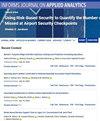Enforcing Ecological Borders between the Human and the Nonhuman: Adapting Pygmalion’s Benevolent Galatea into Frankenstein’s and Contemporary Monsters
Q3 Business, Management and Accounting
引用次数: 0
Abstract
1 Humans are evolutionary adaptations of other biological organisms. However, socio-cultural adaptations associated with the Neolithic Agricultural Revolution, the rise of monotheism, and the Scientific Revolution, have contributed to a radical ontological separation of the human from the nonhuman. This false binary opposition facilitates humanity’s destructive behaviour towards nonhuman components of the biosphere, threatening the existence of our species. This article analyses how artistic texts culturally erect and enforce borders between the human and the nonhuman by representing the transgression of such borders as being undesirable in various ways. These texts use repeated narrative and thematic topoi that are adapted through time to reflect changing historical attitudes towards human/nonhuman borders. 2 This article takes an extremely long view of the historical adaptation of ideas about these borders. Such a vast timescale means that my argument here is inevitably heuristic, selecting only a very few examples of broad phenomena. However, even this brief analysis demonstrates how adaptation studies can be used to explore the ways in which important ideas are adapted through various fictional texts to reflect changing cultural attitudes. In this example, ideas about the relationships between humans and nonhumans take different forms in different historical periods, and the ways in which various narratives about those relationships are adapted in those different historical periods provides evidence for the underlying adaptation of these underlying ideas. ABSTRACTS Humans are evolutionary adaptations of other biological organisms. However, socio-cultural adaptations associated with the Neolithic Agricultural Revolution, the rise of monotheism, and the Scientific Revolution, have contributed to a radical ontological separation of the human from the nonhuman. This false binary opposition facilitates humanity’s destructive behaviour towards nonhuman components of our biosphere, threatening the existence of our species. This article explores the historical development of artistic texts that demonstrate anxieties about transgressing borders between the human and the nonhuman. These texts use repeated narrative and thematic topoi that are adapted to reflect historical attitudes towards human/ non-humains tels que Terminator et Toy Story , en passant par le récit monothéiste/scientifique de Frankenstein , .强化人类与非人类之间的生态边界:将皮格马利翁的仁慈加拉蒂亚改编成弗兰肯斯坦和当代怪物
人类是其他生物有机体的进化适应。然而,与新石器时代农业革命、一神论的兴起和科学革命相关的社会文化适应,促成了人类与非人类在本体论上的彻底分离。这种错误的二元对立促进了人类对生物圈中非人类组成部分的破坏性行为,威胁着我们物种的存在。本文分析了艺术文本如何在文化上建立和强化人类与非人类之间的边界,并以各种方式表现对这些边界的越界。这些文本使用重复的叙事和主题主题,随着时间的推移而调整,以反映对人类/非人类边界不断变化的历史态度。这篇文章从一个极其长远的角度来看待关于这些边界的观念的历史适应。如此巨大的时间尺度意味着我在这里的论点不可避免地是启发式的,只选择了广泛现象的极少数例子。然而,即使是这个简短的分析也表明,适应研究可以用来探索重要思想通过各种虚构文本被改编的方式,以反映不断变化的文化态度。在这个例子中,关于人类和非人类之间关系的观点在不同的历史时期有不同的形式,而关于这些关系的各种叙述在不同的历史时期被改编的方式,为这些潜在观点的潜在改编提供了证据。人类是其他生物有机体的进化适应。然而,与新石器时代农业革命、一神论的兴起和科学革命相关的社会文化适应,促成了人类与非人类在本体论上的彻底分离。这种错误的二元对立促进了人类对生物圈中非人类组成部分的破坏性行为,威胁着我们物种的存在。本文探讨了艺术文本的历史发展,这些文本展示了对超越人类与非人类之间边界的焦虑。这些文本使用重复的叙事和主题主题,以反映对人类/非人类的历史态度,就像《终结者》和《玩具总动员》一样,就像《科学怪人》一样。
本文章由计算机程序翻译,如有差异,请以英文原文为准。
求助全文
约1分钟内获得全文
求助全文
来源期刊

Interfaces
管理科学-运筹学与管理科学
CiteScore
3.20
自引率
0.00%
发文量
0
审稿时长
20 months
期刊介绍:
The mission of INFORMS Journal on Applied Analytics (IJAA) is to publish manuscripts focusing on the practice of operations research (OR) and management science (MS) and the impact this practice has on organizations throughout the world. The most appropriate papers are descriptions of the practice and implementation of OR/MS in commerce, industry, government, or education. The journal publishes papers in all areas of OR/MS including operations management, information systems, finance, marketing, education, quality, and strategy.
 求助内容:
求助内容: 应助结果提醒方式:
应助结果提醒方式:


